10+ SAMPLE HR Change Management Plan
-
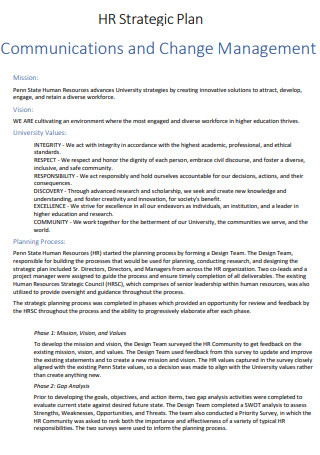
HR Strategic Change Management Plan
download now -
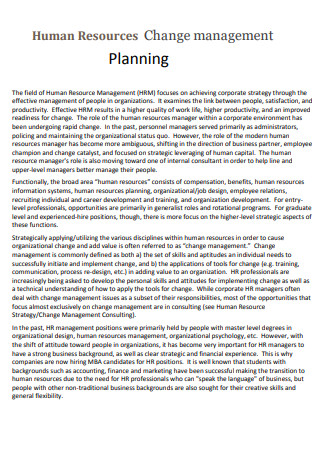
HR Change Management Plan
download now -
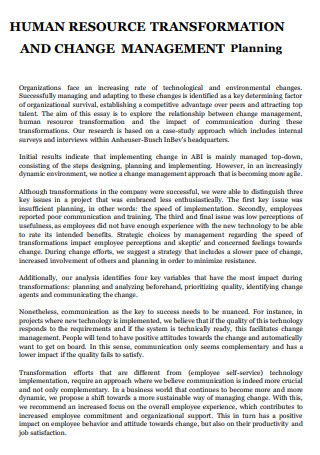
HR Transformation Change Management Plan
download now -

HR Consulting Change Management Plan
download now -
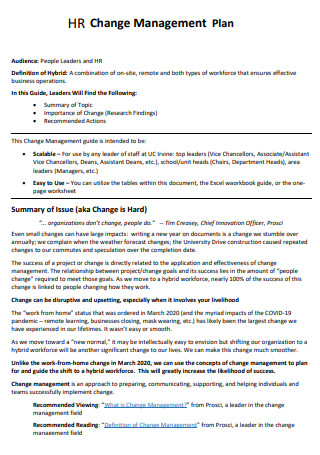
Sample HR Change Management Plan
download now -
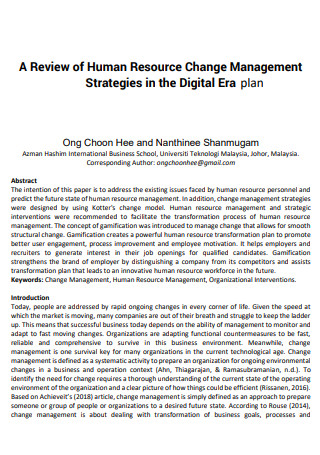
HR Change Management Plan Review
download now -

HR Change Management Plan Example
download now -

HR Culture Change Management Plan
download now -
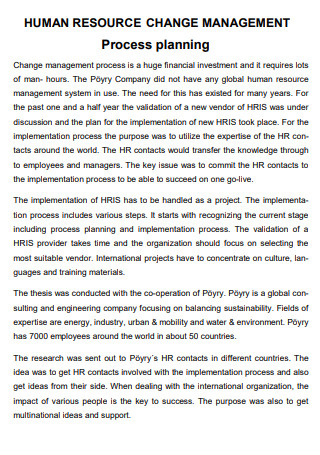
HR Change Management Process Plan
download now -
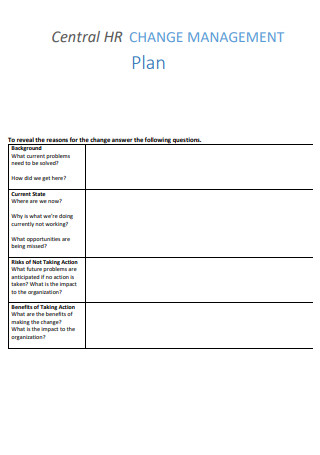
HR Change Management Plan Template
download now -

HR Change Management Stage One Plan
download now
FREE HR Change Management Plan s to Download
10+ SAMPLE HR Change Management Plan
What Is an HR Change Management Plan?
What’s in an Effective HR Change Management Plan?
Why Is Change Management Important?
Steps in Creating an HR Change Management Plan
FAQs
What is an adaptive organizational change?
What is an example of a change management challenge?
How to avoid communication breakdown during the change implementation process?
What Is an HR Change Management Plan?
First of all, what is change management? To put it in a simple way, change management refers to a system of planning, analysis, and action with an aim to limit any stoppages or hitches, whether short or long term, to make any types of company transitions as smooth as they can get. In other terms, change management has a goal to successfully implement procedures, products/services, and strategies while minimizing any sort of unfavorable outcomes. In today’s constantly evolving world, change management has proved to be an essential factor to the success of any type of business.
What is an HR change management plan? An HR change management plan is a business document used mostly by human resource professionals to effectively manage the change process while also maintaining the budget, timeline, scope, communication, and resource control. The change management plan will reduce the impact of a change on the business, workers, customers, and other key stakeholders. In a nutshell, this document acts as a roadmap, defining the precise measures an organization will take to carry out the change management process. This document is required whenever there is a possibility that a change will affect a large part of the organization or its employees and customers.
What’s in an Effective HR Change Management Plan?
Here are the important factors that should be noted when creating an HR change management plan:
Why Is Change Management Important?
Here are the different reasons as to why change management is important, especially in the human resources area:
Steps in Creating an HR Change Management Plan
Here are the necessary steps that should be taken when an HR change management plan is to be created:
-
1. Define the Goals
This is the primary step to be taken when creating this type of document. In this step, begin with the final goal in mind by identifying the objectives of the change management plan. It basically means that even before you set your goals, you must recognize how the change will impact the business, staff, and, if applicable, the organization’s clients and customers. You should also describe key performance indicators to assess the success of the change management plan, and, most importantly, develop a strategy for gaining employee buy-in and raising awareness of the changes.
-
2. Create a Change Management Team
After defining the main goals to be achieved in the HR change management plan, this step will then follow. In this phase, different types of people and resources are usually needed for the different phases of the change management plan. Enlisting stakeholders’ support and executing good resource planning are two main things you can do to successfully develop a team. Enlisting stakeholders will significantly boost the chances of a successful change effort if you have a strong team. In addition, while arranging resources, you should consider who will be responsible for each job. Determining who your assets will be to assist the change project will aid in the execution of the strategy.
-
3. Write the Plan
After creating a change management team to work on the change process, the next step is to write the change management plan. Developing an action item checklist, charting a timetable, and employing various project management tools are all important points to consider when developing a change management strategy. When creating an action item checklist, make sure to include communication and feedback possibilities as well as every activity that has to be performed. When creating a timetable for the change management process, assign a deadline to each action item to guarantee that the change initiative is finished by the due date. And on utilizing project management tools, make use of project management software. Add action items to the program and assign them to suitable team members.
-
4. Execute the Change Management Plan
After writing the change management plan, the next step is to execute it properly. When implementing the change management plan, it is also critical to develop a resistance strategy, as certain employees in your organization may be resistant to change. So, while implementing your change management strategy, make sure there is education and training from the start, and that this education continues throughout the process of implementation. Furthermore, you may boost team trust in the transformation process by highlighting and publicizing team victories, as well as giving extra incentives and rewards for implementation. The bottom line is that you must create a culture for change to exist and flourish.
-
5. Follow-up On the Process
After implementing the change management plan, the necessary step to take is to perform a follow-up. This is done in order to ensure a long-lasting change. Positive reinforcement is one method of ensuring long-lasting change once it has been implemented. What exactly does this mean? To address this, rather than instituting punishments for a lack of compliance, devise a plan for encouraging change. Rewarding employees for accepting change will be far more effective. Also, make it simple for individuals to adopt the new method of doing things. Furthermore, following the implementation phase, things do not always proceed as planned. To counteract this, devise a strategy for identifying these problem areas and pivoting to an alternative plan.
FAQs
What is an adaptive organizational change?
Organizational changes are the things that need to be guided in a change management plan. Small, progressive, iterative adjustments that an organization makes to improve its products, processes, workflows and initiatives over time are referred to as adaptive organizational changes. Hiring a new team member to meet growing demand or instituting a new work-from-home program to draw more competent job candidates are both instances of adaptive modifications.
What is an example of a change management challenge?
An example of a type of change management challenge that may be faced is fear and conflict. This is because frequent organizational changes can elicit feelings of uncertainty and dread. Employees may take their emotions out on one another as a result of this. It is the job of leaders to overcome problems and resolve disagreements in this situation. An engaged leader should always be prepared to delve further into the issue while acting in compliance with their organization’s change management strategy.
How to avoid communication breakdown during the change implementation process?
Decisions concerning substantial organizational changes are sometimes made at the highest levels of management and subsequently trickle down to employees. As a result, it may be unclear why and how the firm is changing. To avoid this issue, HR should be included in change planning from the beginning in order to help incentivize employees to participate. Employers should convey change-related information to workers using a variety of channels, including e-mails and meetings. Furthermore, leaders should explain why the change is necessary.
Frequent changes in a business organization are no mean feat to pull off, and can even be tiresome for the employees that work in that organization. But when an HR change management plan is created and implemented by the human resource personnel, the change process can have a positive impact on the company. In this article, various examples of this document are in place to aid you in the process of creating one.
